Get PeakVisor App
Sign In
Search by GPS coordinates
- Latitude
- ° ' ''
- Longitude
- ° ' ''
- Units of Length

Yes
Cancel
Share ×

Scan the QR code and open PeakVisor on your phone
❤ Wishlist ×
Choose
Delete
The Ritsa National Park is located in the mountainous part of Abkhazia on the southern slopes of the Greater Caucasus Range, between the Ghegha River and the Pshchitsa River. It was founded in 1996 on the basis of the Ritsa Nature Reserve, established in 1930.
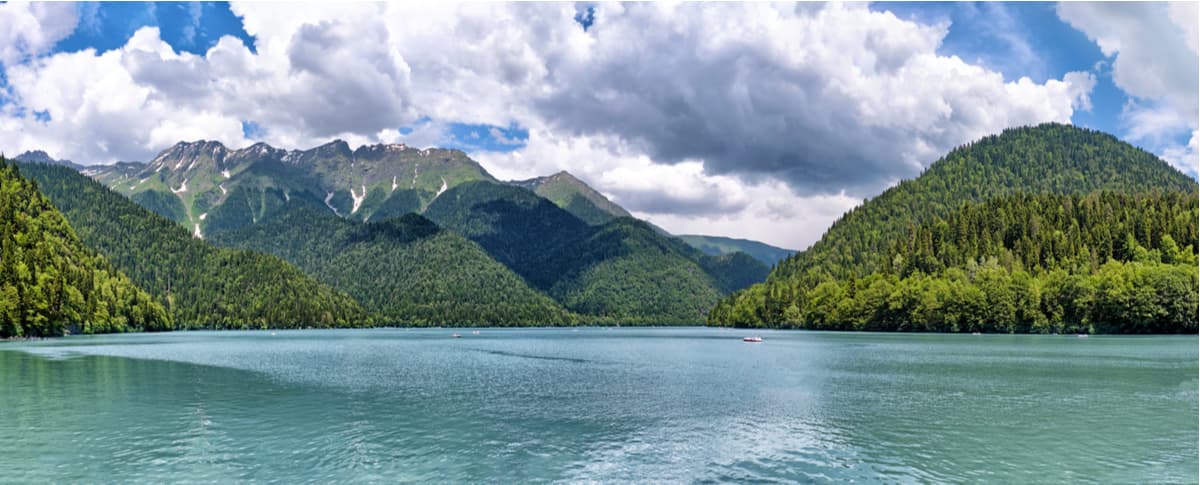
The area of the reserve is 39,000 hectares. The difference in elevation is significant, from 100 m to 3,256 m above sea level (Mount Agepsta), which creates a rich range of environmental conditions for the growth of many plants and animals. The high-mountainous terrain and abundant precipitation help to create favourable conditions for many lakes, rivers and waterfalls. Lake Big Ritsa is a special pride of the national park but other lakes are on par with the big bro, e.g. Little Ritsa is charming, Blue Lake is astounding, there are several glacial lakes in the highlands. The largest of the waterfalls is in the Ghegh canyon, it falls down in a white 50-metre curtain from the wall of the Ghegh canyon.
The park is a unique natural hub with quite specific endemic communities and many very endemic plants. The park, which covers only 4.6% of the territory of Abkhazia, contains at least 70% of plant species (about 900 species) which is about 13% of the flora of the Caucasus. There are over 120 species of trees and shrubs. The lower forest belt is mainly dominated by such deciduous species as Caucasian hornbeam, Oriental hornbeam, Iberian oak, Oriental beech, hackberry, elm, maple. There grows laurel, Colchian oak, hawthorn, Colchian boxwood, the latter is plentiful especially on the riverside slopes on stony limestone cliffs. The upper forest belt is dominated by coniferous trees: Caucasian fir and Oriental spruce.

The subalpine and alpine belts also feature many remnants of ancient flora that vast relict communities here. In the alpine meadows, one can find species of jointweed (nope, you cannot smoke it, it is a species of Polygonum family), Abkhazian carnation, Abkhazian betony, paradoxical gentian, chamomile and others.
The animal world of the Park is also very rich. In addition to the usual Caucasian species, i.e. brown bear, wolf, fox, boar, roe deer, there are also endemic species. In the mountainous forest zone, you can encounter rare species of red deer and lynx. Among amphibians, there is a very rare frog called the Caucasian parsley frog and the largest Caucasian subspecies of grey toad, an endemic banded newt. There is plenty of trout in rivers and lakes.
The climate of the Park's area depends on the relief, altitude, exposure of slopes, distance from the sea and many other factors that are very variable even in such a small area. All types of the climate of Abkhazia are represented on the territory except for subtropical climate of the coastal strip.
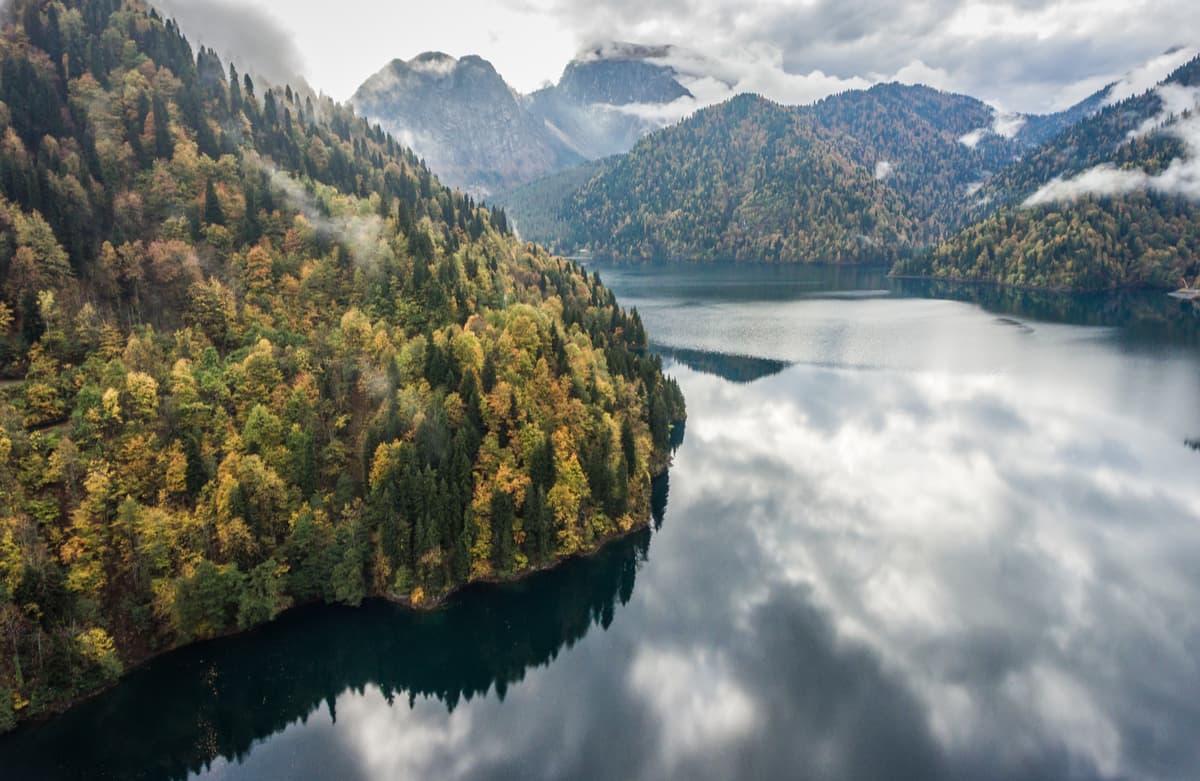
Lake Ritsa enjoys a mountainous and humid climate which is additionally affected by the presence of a thermal-intensive mass of lake water. It softens cold winters, especially at the beginning and delays the onset of spring. So, the coldest month here is February - 0,9C (30.4F), and the warmest August is +18,4C (65.1F). The average annual temperature is +8.4C (47.1F). Thus, the area of Ritsa Lake is characterized by a cool summer, relatively warm spring and autumn and not very frosty winter.
The Ritsa is the top one in many respects, it is the biggest and one of the most beautiful lakes of Abkhazia. It is located at an altitude of about 950 meters and is surrounded by mountains on three sides: Pshegishkhva (2,216 m) in the south-west
Arikhua rocky massif with peaks of Anchkho(2,696 m) in the east
Atsetouck rocky massif with peaks of Agepsta (3,261 m) and Atsetuka (2,546 m) in the north

Lake Ritsa itself was formed as a result of an earthquake and the collapse of one of the Pshegishkhva slopes. The rocks blocked the way of the Lashipse River forming a natural dam. Over time, a lake has appeared here whose total length today is about 2000 meters and the depth is 150 meters.
For most tourists, the Ritsa National Park is synonymous with Lake Ritsa. Indeed, this lake is located on the territory of the park, it is the signature of the area and the most visited attraction. There is a good road from the Black Sea coast to lake Ritsa, which, however, does not end at the lake but leads farther to other attractions. Along this road, there are other interesting places which are usually visited during a tour of Lake Ritsa.
The younger brother of the big Lake Ritsa, Little Ritsa is five kilometres away and lies at an altitude of 1,235 meters above sea level, which is about 360 meters higher than Lake Ritsa. In comparison with the big lake, its size is much more modest, only 530 by 290 meters, and the depth reaches 76 meters. Not a single river flows into the lake, the water comes from precipitation and the melting glaciers covering the slopes of the surrounding mountains. There are no amenities around the lake, all you have is pure nature, mind-blowing views and silence.
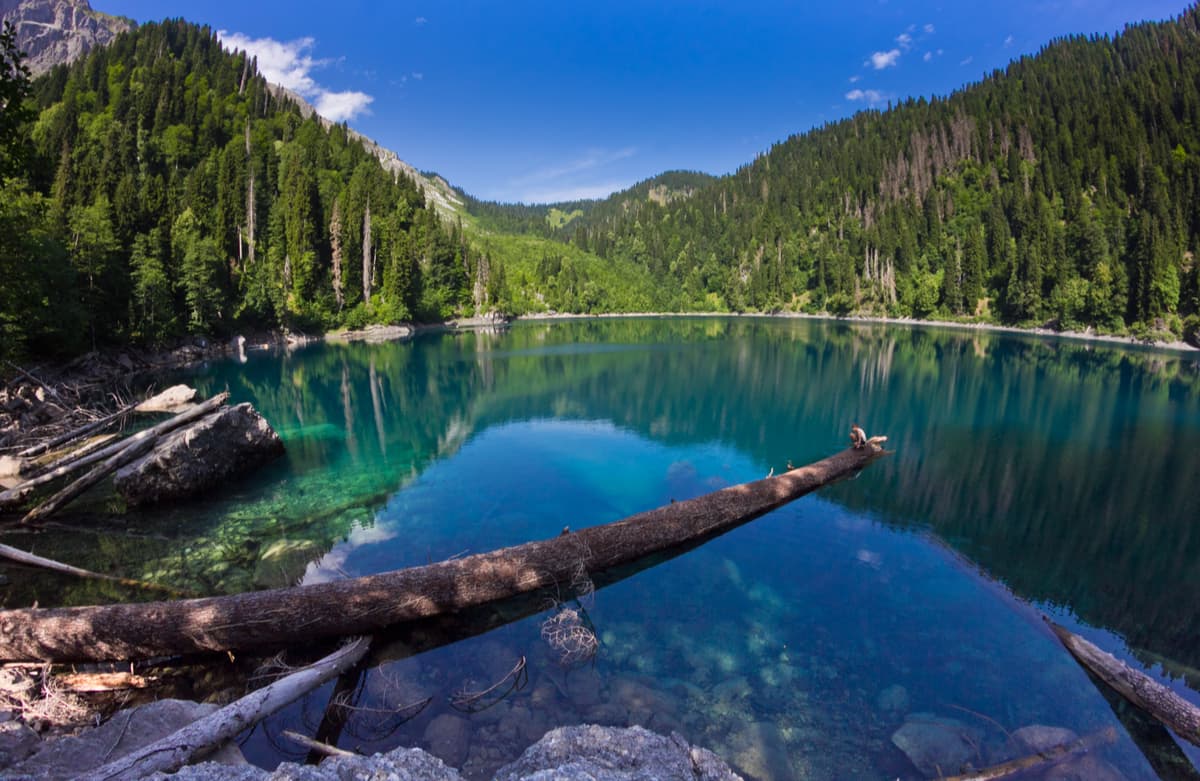
Little Ritsa lake and its surroundings are very beautiful, many tourists considere it even more beautiful than the big Lake Ritsa. The only problem is the accessibility, there are no roads leading to the lake, the only way is on foot, which makes the trip a bit challenging but so rewarding. Nature is definitely cleaner and more pristine. The trail passes through a beautiful old-growth forest and is accessible to every tourist without special training, you just have to be only in good physical shape, wear good sturdy shoes, and bring drinking water with you.
The elevation gain is almost 360 meters, which means the ascent will take about 1.5h in the upward direction and a little less when you go down. This time does not fit into the routes covered by standard lake excursions, so you should only go to Little Ritsa if you come to the area by car or with a private guide. It is better to allocate about 4 hours for the whole route.
This is a small lake in the Gagra Region of Abkhazia. It is well known for its turquoise water, the colour of which is given by azurite mineral. This is one of the most beautiful and memorable sights of Abkhazia, but it is rarely visited separately, people usually make a short pit stop here on the way to Lake Ritsa.
Blue Lake is of karstic origin and very small in size, only 30 by 20 meters, but according to some estimates, the depth goes as far as 76 meters. It is never covered with ice, and its temperature keeps at 10 degrees Celsius throughout the year. Another peculiarity is that there are no fish or other living creatures in the lake. Do not be surprised about the water in the blue lake looking muddy. This is due to the very large water column since the depth is very big.
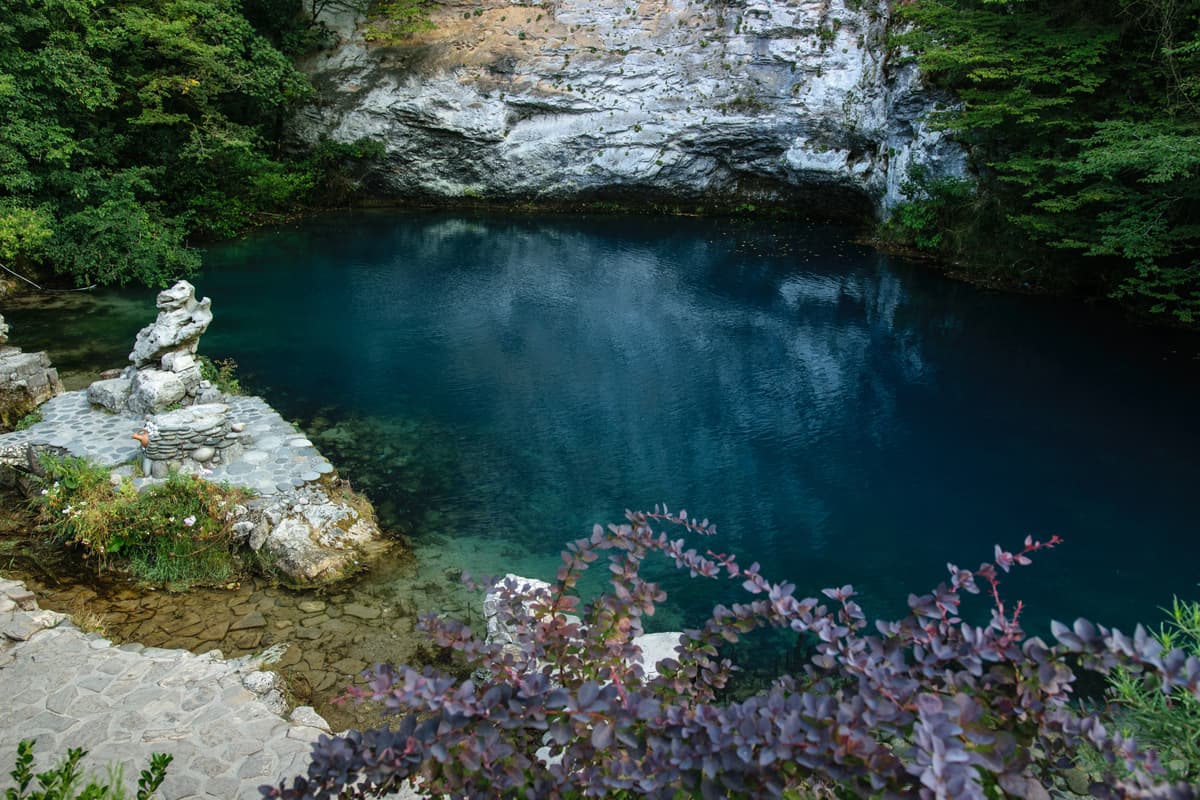
They’ve been lying to you that men don’t cry, they do sometimes, rarely, but do cry, especially when they see your spendings at LV. The Men's Tears Falls, as well as Girl's Tears Falls (Sochi National Park), is located on the road to Lake Ritsa, only a little bit farther, just 30 kilometers, and already on the territory of the Ritsa National Park. The only problem with this falls is that water flows down a thin stream, just as those notoriously avaricious tears. To compensate for the modesty of the spectacle, there is a very beautiful forest in the vicinity which is worth a walk.
The Jupshar gorge, also called the Stone Bag, is one of the most spectacular natural attractions of the Ritsa National Park. It was formed along the Jupshara River (aka Jupsara), and lies almost 8 kilometers from the start of the road to Lake Ritsa. The walls of the gorge hang over the road and the river and reach almost 500 m in its deepest place. The width of the gorge ranges from 100 m to 20 m in the narrowest place.

Stalin's dacha on Lake Ritsa is one of about twenty country houses that the USSR General Secretary had operating throughout the former Soviet Union. This one is believed to have been one of his favs, which is not surprising because it is located on the shores of Lake Ritsa and surrounded by beautiful green mountains. Today, any tourist can visit this place as a historical sight.
The house was built in 1947, and contrary to expectations, it does not look like a classical palace from the outside. On the contrary, it is rather a simple-looking house despite an impressive area of 500 square meters. The premises around are simple, there are no pompous sculptures and a garden. The interior is also quite basic, the furnishings are simple but functional, however, the materials are exceptional, there is rare expensive wood used and the furniture is custom-made especially for Stalin, who was not particularly tall. A small Atsetouck hydroelectric power plant was built nearby to provide electricity to the country house and related buildings.

There is nothing much to see here if you go alone, the architecture is quite unremarkable. Yet, hire a good local guide, and the tour will become a fairytale galore, when you are submerged into personal history and have some liaisons to the historical perspective, the story will come undone with a myriad of shades of meanings.
Lake Mzy (Mzym) lies high in the mountains, it is another gem of Abkhazia, located at an altitude of 2000 meters. Yet, it is very accessible to visitors who don’t have extensive experience of hiking. There is no special equipment needed, all you should have at your disposal is one day and good sensible shoes.
The size of the lake is small, only 100 by 45 meters, but the depth is 40 meters. It is formed by the waters of melting glaciers, therefore, don’t expect for the water temperature to exceed 4 degrees Celsius (39F). Mzy is the coldest lake in Abkhazia. Also, depending on the season, you can also see snow glades remaining around the lake even in June.

The road to the lake is very picturesque. It is winding in the dense boxwood and fir forests, then you suddenly step into the emerald-green alpine meadows. Depending on the season, you will see those vase green glades in bloom, the views are stunning, fairy-tale like, wonderful scents are spilled in the air. On the way to the Mzy, you can visit Blue Lake and Ghegh Falls. Despite the beauty of nature, the weather might be quite treacherous, so take some warm clothes or a raincoat when you embark on the hike.
The Milky Falls (aka Molochniy) is located near the eastern shore of Lake Ritsa where the river Vodopadnaya flows into the lake. Stalin’s country house is nearby. The Milky Falls is notable for the fact that the water in it is white and reminds milk, thus the name. This is because the waterfall consists of several rapids and goes over a lot of stone ledges, as a result of which the water is white and seems boiling as it is saturated with air bubbles. It is believed that if you swim in the waterfall, you can stay young for longer, which is not surprising because the water is very cold and swimming in the fall will definitely strengthen your immune system.
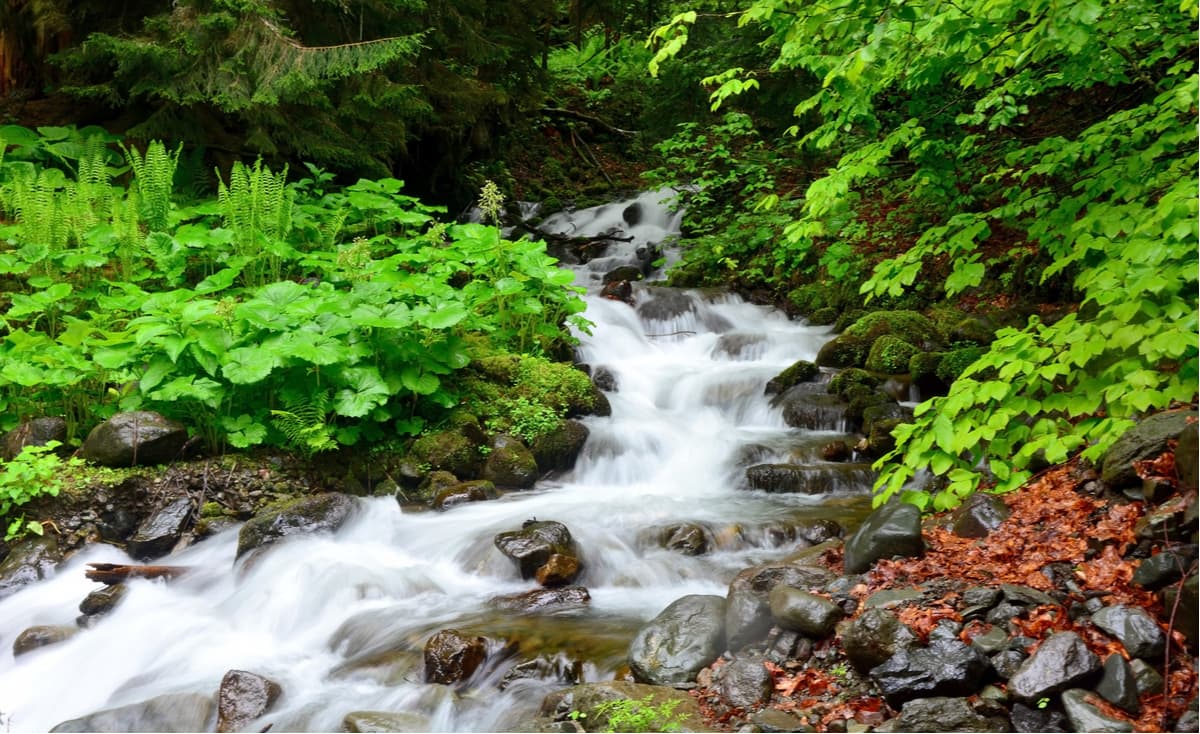
The Bird's Beak Falls is quite picturesque, it is located near Lake Ritsa right by the road, a little farther away from the lake, so most tourist groups simply overlook it. However, all tourists and travelers moving towards the Seven Lakes Valley, Lake Mzy and Lake Auadkhara will surely pass by this waterfall. The water in it is drinkable, so you can restock your fresh water supply if you go on a long hike in the mountains. There is also an observation deck on Lake Ritsa nearby.
This is a multi-day route through the Ritsa Nature Park with access to the lofty Mount Adzhara located on the very border with Russia. In the Soviet times, once you crossed the Greater Caucasus Range, you could reach Lake Kardyvach and Krasnaya Polyana in just a couple of days. On the route, there are popular mountain sights as well as less promoted but not inferior in beauty. There are many mountain lakes overlooking the top of Anchkho (2,697 m), rocky spurs of Mount Adzhara, the Adzhara Falls.

Pshegishkhva Mountain (2,216 m) is located in the south-west of the Park. A part of this mountain collapsed several centuries ago and formed Little and Big Ritsa lakes. The mountain is a signature sight of Abkhazia. Pshegishkhva is an excellent sightseeing point, in the west there are views over the massif of Arbaiki and the Black Sea. In the north, there is the formidable wall of Agepsta, in the east – Little and Big Ritsa lakes, and in the south, you will see the vast Bzyba karst plateau. Due to various reasons, Pshegishkhva itself is extremely underestimated by the tourism officials and common visitors. Thousands of tourists travel around the area every day but the area is so unexplored that perhaps 9 out of 10 guides and tour guides have no idea that you can go to this mountain.
Skiing is a serious endeavor on Mount Pshegishkhva. It requires excellent riding skills on the tracks and off the tracks.

The administration of the park is located at: Abkhazia, 1a Lakoba Street, Gudauta, ritsa-park@mail.ru , tel. +79409934598.
The Park entrance checkpoint is 30 km from Gagra. You can visit the park by yourself by car or with a guided group excursion from Abkhazia resorts or from Sochi. A good asphalt road leads to the park, it starts its way in the village of Bzypta and runs along the Jupshara and Bzyb rivers. You can drive on your own or rent a car (travel time from Gagra is about an hour, from Sochi is a bit more than two hours). The road runs near the main attractions of the Park and is surrounded by developed infrastructure, including cafes and vendor stalls with local products which you should definitely try.
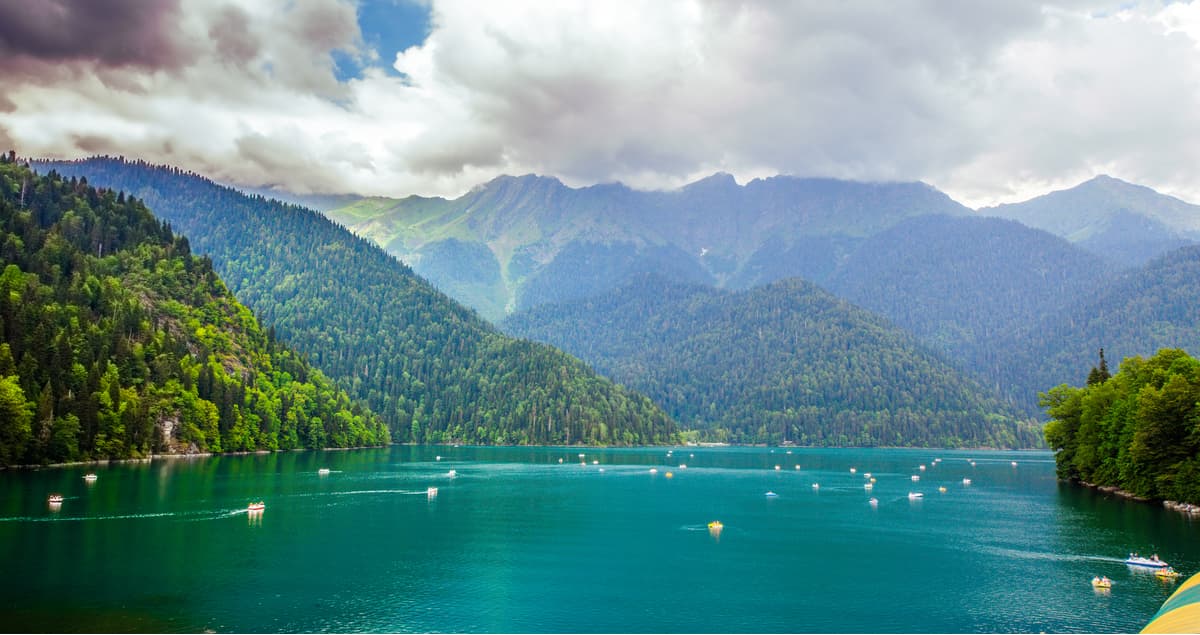
Tour guides can be found in Sochi, Adler, and the numerous Abkhazian resorts. The cost of excursions to lake Ritsa (including a visit to the Blue lake) from Gagra starts from 750 rubles+entrance fee to the Park. There is the ‘environmental fee’ charged by the Park and paid at the checkpoint of the Park: adults – 350 rubles, children 8-12 years – 150 rubles, children under 8 years go free of charge.
However, the trip for foreigners is not that easy. Due to specific political status, Abkhazia has imposed some rules of visitation.
The Entry of foreign nationals into the Republic of Abkhazia
The regime of visa-free entry into Abkhazia applies to citizens of the following countries
https://www.abkhazia.ru/stateborder/foreigners/
The Russian Federation
The Republic of Nicaragua
The Republic of Tuvalu
The Moldovan Transdniestrian Republic
The Republic of South Ossetia
In addition, in accordance with the Decree of the President of the Republic of Abkhazia № 172 On the visa-free entry into the Republic of Abkhazia of certain categories of foreign nationals dated 30.06.2016 established the following categories of foreign nationals entering the Republic of Abkhazia without obtaining visas:
Foreign citizens – members of guided tour groups (except for Georgian citizens) entering Abkhazia for the term not exceeding 24 hours.
Citizens of the Republic of Belarus and the Republic of Kazakhstan entering the Republic of Abkhazia for tourism or business purposes for a period not exceeding two weeks.
For citizens of other foreign states with which Abkhazia has not signed intergovernmental agreements on mutual visa-free travels, the visa is required since April 1, 2016 according to the law of the Republic of Abkhazia.
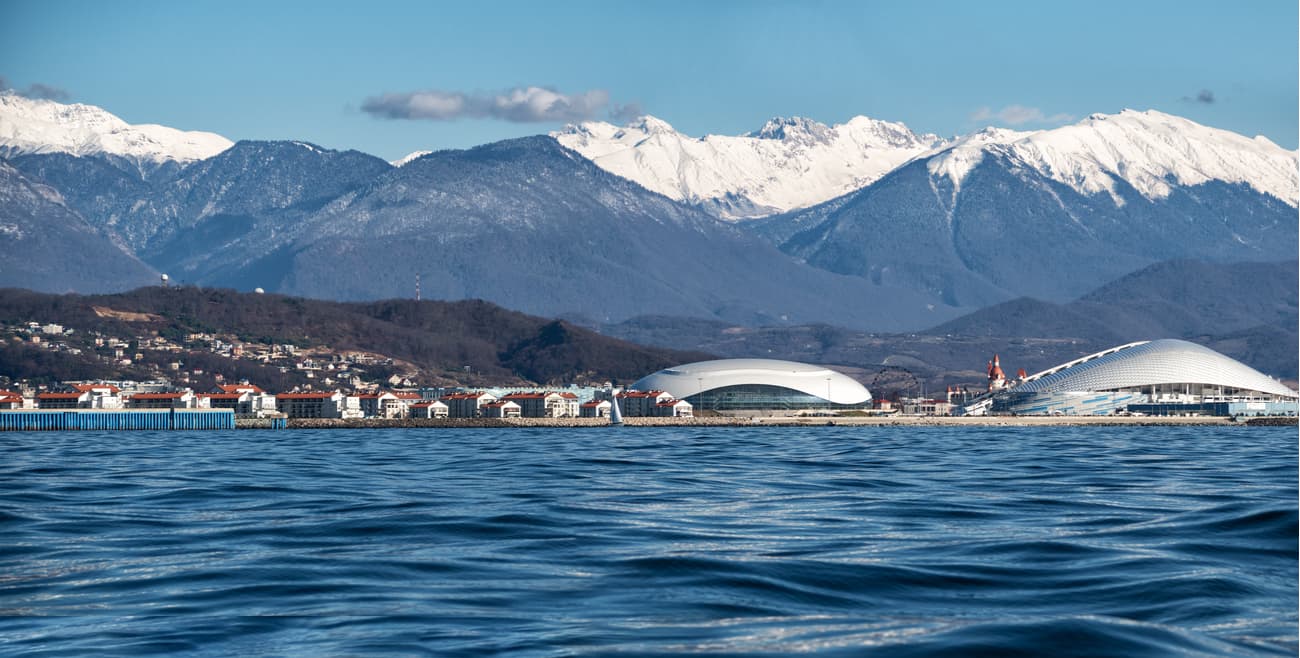
It is a popular Russian summer resort as well as a venue for important forums and major international events. Adler's main attractions include the 2014 Winter Olympic Park, the Sochi Theme Park, and the Arboretum park Southern Cultures. Adler is home to the Sochi International Airport, a railway terminal and the Sochi Imeretinsky seaport.
Explore Ritsa-Auadhara National Park with the PeakVisor 3D Map and identify its summits.








